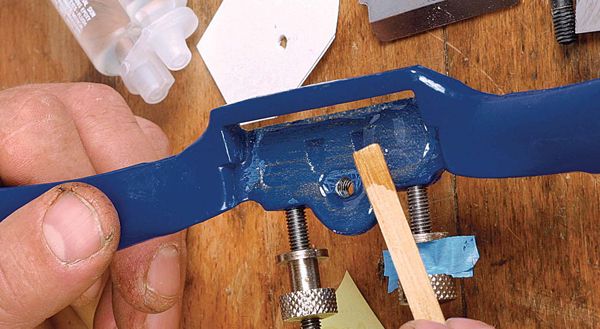Soup Up Your Spokeshave
Three-step process takes the tool from good to better to best
Synopsis: A spokeshave is a very nimble plane, with a short sole that can follow convex and concave surfaces. Any time you have a part that you can’t plane evenly because of its shape, a spokeshave will help. Brian Boggs has a dozen and in this article, he shares how to select, maintain, and upgrade them. Once you get a handle on his tips, practicing to use yours will be a lot more fun.
The tool’s name suggests that the spokeshave is for shaving wheel spokes, but chair makers and cabinetmakers have been using the spokeshave for generations in myriad wood-shaping situations. Basically, a spokeshave is a very nimble plane, with a short sole that can follow convex and concave surfaces. A good shave can follow an S-curve and leave a surface that needs little further attention.
Any time you have a part that you can’t plane evenly because of its shape, there is probably a spokeshave that will help.
Think of all of the parts that you have bandsawn a curve into: a table apron, a leg for a hall table, parts for a music stand. While a template setup for a router or a sander will smooth the curves, it takes time to make the template and the setup. I recently sold my inflatable sanding drum because I could almost always spokeshave a part to smoothness more evenly and quickly. Even when I template-rout bandsawn parts, I finish them with a shave.
Start with a metal-bodied, flat-bottomed shave
I have been using shaves to shape my chair parts for 18 years and have about a dozen or so, each with its own purpose. If you don’t own a shave, you have a lot to choose from. There are flat and round-bottomed shaves, and you can buy a shave that is concave across its width, which leaves softer facets on round parts. Then there’s the whole group of wooden shaves, in which the blade rests directly on the wood for the lowest possible cutting angle. But a metal-bodied, flat-bottomed spokeshave is the most versatile and gives the greatest chip control.
This standard spokeshave is inexpensive, but it requires a tuneup. The tuning process has the obvious benefit of improving the tool’s performance, but it has an even more important role in developing your understanding of the tool. You’ll quickly identify problems in your shaving work, and I bet you’ll keep the blade sharper after you’ve so lovingly refined the tool.
Although there are a number of metal shaves on the market, their tune-up checklists are the same. The metal shave that shows up most often in my students’ toolboxes is the Record No. 151, so for simplicity, I’ll use this one as a demonstration.
I break down a major tune-up into three manageable tasks, most of which can be accomplished quickly. You don’t have to go through all three steps to improve your tool; the first two will make a big difference. But once you see how much better the tool performs, I think you’ll want to go all the way.
From Fine Woodworking #158
For the full article, download the PDF below:
Fine Woodworking Recommended Products

Stanley Powerlock 16-ft. tape measure

Suizan Japanese Pull Saw

Marking knife: Hock Double-Bevel Violin Knife, 3/4 in.





















Log in or create an account to post a comment.
Sign up Log in